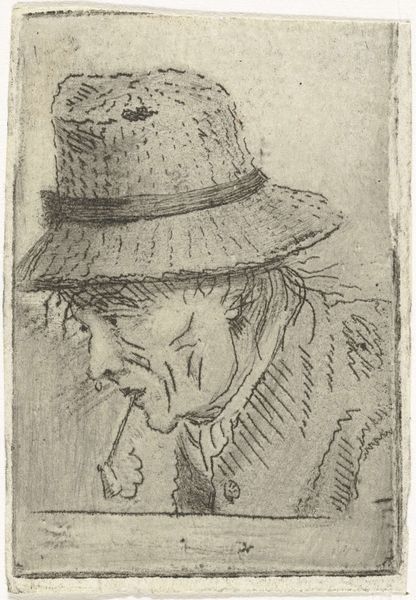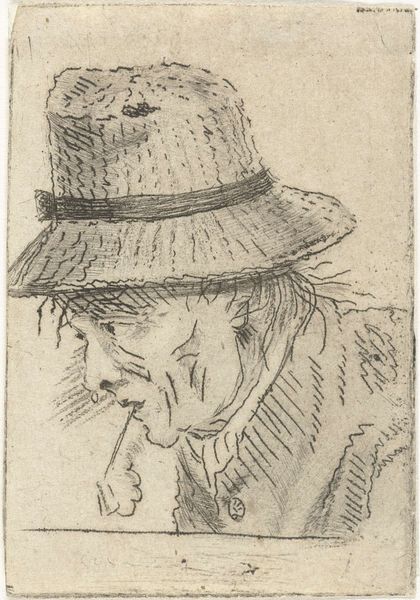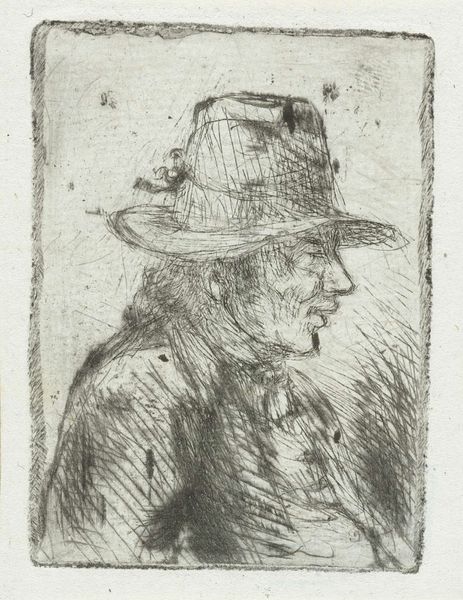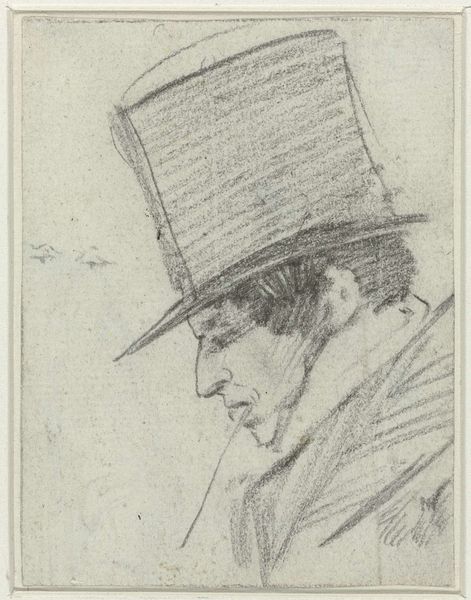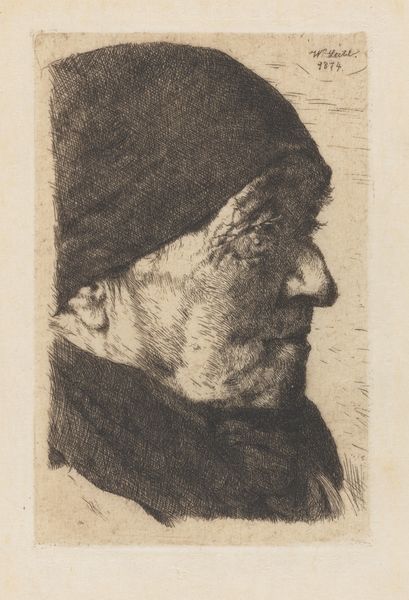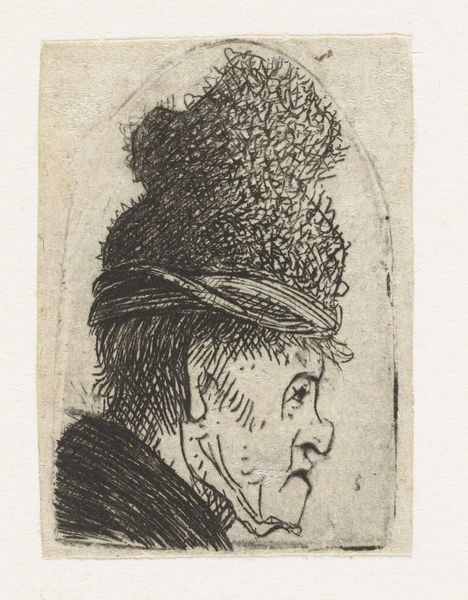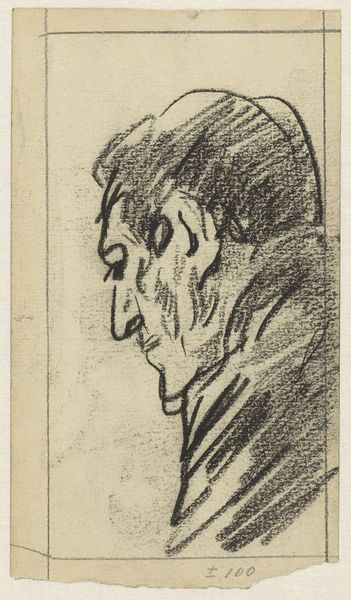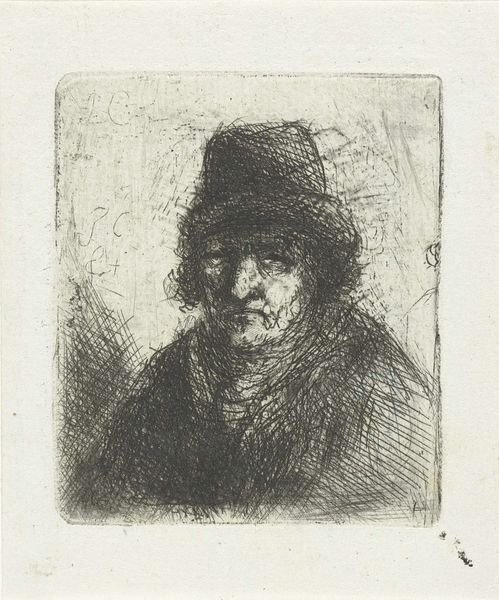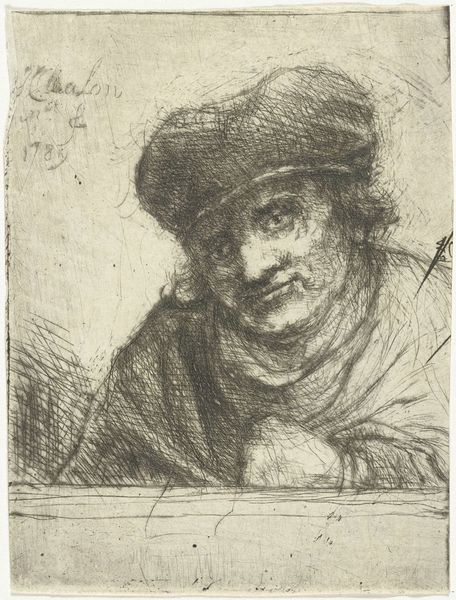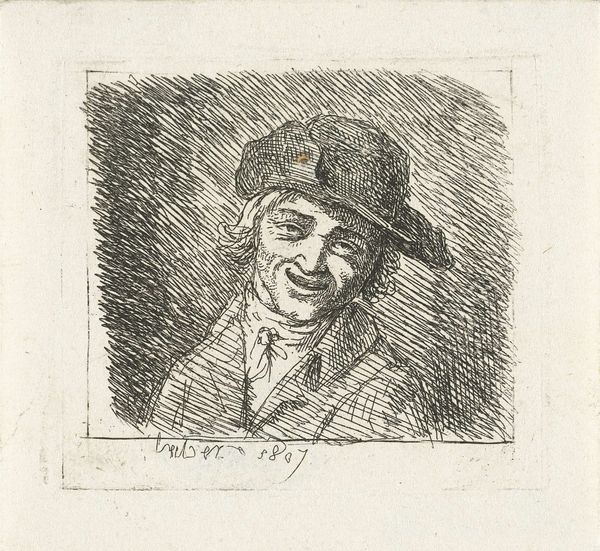
drawing, print, etching, pencil
#
portrait
#
drawing
# print
#
etching
#
pencil sketch
#
pencil
#
realism
Dimensions: height 55 mm, width 40 mm
Copyright: Rijks Museum: Open Domain
Editor: So this is *Man's Head with Hat and Pipe*, an etching made sometime between 1756 and 1817 by Louis Bernard Coclers. It's intriguing; the lines are so deliberate, almost scratchy. What catches your eye about it? Curator: Immediately, the etching process itself. Think of the copper plate, the labor involved in incising those lines, the careful application of acid… Every step reliant on skilled labor, and reflecting a deliberate social stratification. It's not just an image; it's a product of specific conditions. What kind of person was likely depicted in such a manner, and what level of craftsmanship afforded his likeness being committed to the medium? Editor: That’s a great point, considering this piece is both a drawing, a print, and an etching. Were etchings popular among a certain class of people then, perhaps becoming consumer products? Curator: Precisely! We have to consider the social implications. Etchings allowed for reproduction, bringing images to a wider audience beyond the elite. Was Coclers perhaps democratizing portraiture by utilizing printmaking techniques? It challenges our traditional notion of "high art," right? Editor: Definitely. It makes you consider the materials involved and how they allowed the work to be distributed and consumed. It highlights how it was made and seen, and the way Coclers challenges our expectations for both material value and societal standing. Curator: It moves the discussion away from simply the aesthetics and closer to an exploration of social and economic conditions embedded within artmaking. This man smoking a pipe becomes more than a portrait. Editor: Absolutely. I see that now! Thanks for providing that context, thinking about the work involved definitely opened it up for me. Curator: Indeed, and seeing how materials influence accessibility allows for us to create avenues for new and insightful conversations.
Comments
No comments
Be the first to comment and join the conversation on the ultimate creative platform.
